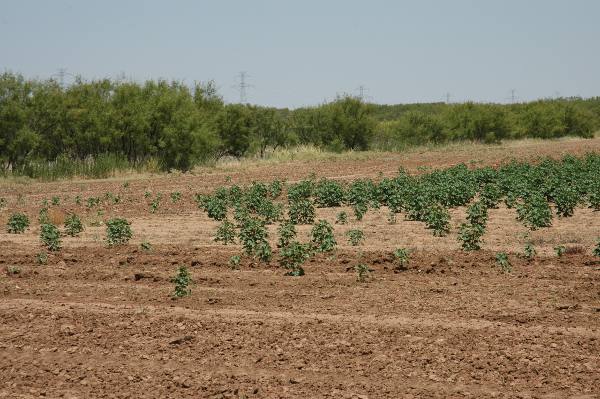
Drought conditions have improved slightly across Texas since last week, but reservoir levels have declined to their lowest point since 1990 at only 63 percent full, down from 64 percent last week.
Drought status dropped to 97 percent, down from 99 percent a week ago, according to the Texas Water Development Board weekly Texas Drought Report. Three months ago, drought status also held at 99 percent, higher than 88 percent this time last year.
“Aquifer levels continue to fall in most of the state,” the weekly report stated. “Drought restrictions are affecting pumping in some (areas), notably the Edwards aquifer.”
Reports indicate reservoirs in South and West Texas have some of the lowest levels. Amistad, in the Lower Rio Grande Valley, is at 41 percent capacity. Choke Canyon, near Corpus Christi, is at 38 percent; Elephant Butte, El Paso, is almost dry at 4 percent and Lavon, northeast of Dallas, is at 60 percent.
If you are enjoying reading this article, please check out Southwest Farm Press Daily and receive the latest news right to your inbox.
Livingston, in the Houston area, is at 96 percent capacity, while Meredith, in the Amarillo-Lubbock area is rated at zero percent. O. H. Ivie—San Angelo-Midland-Odessa—is only at 18 percent. Travis, near Austin is rated at 33 percent capacity.
Overall, state reservoirs are at 63 percent full, off from 64 percent last week and 66 percent three months ago. Last year reservoirs were at 72 percent and normally reservoir levels at this time of year are at 83 percent.
Rainfall has been varied across the Southwest region with some areas recording helpful rain in mid-to-late July.
A report from southwest Oklahoma indicates a return of hot, dry conditions over the past two weeks. Some areas in the Texas High Plains reported varying amounts of rainfall on the last day of July.
But with return of triple digit temperatures across much of the region, crops will demand more rain as they head into the home stretch of the growing season.
Also of Interest:
About the Author(s)
You May Also Like






